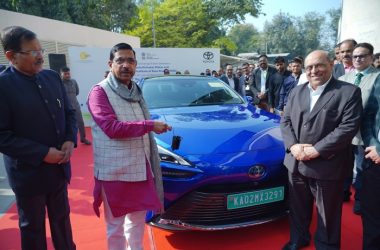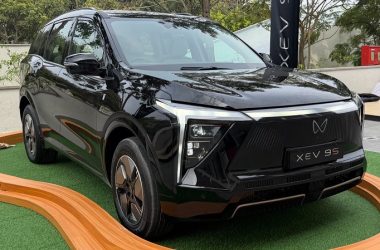India’s journey toward sustainable mobility is gaining traction under the PM Electric Drive Revolution in Innovative Vehicle Enhancement (PM E-DRIVE) Scheme, notified by the Ministry of Heavy Industries (MHI) on September 29, 2024. With a robust outlay of ₹10,900 crore, the scheme is envisioned to catalyze India’s electric vehicle (EV) ecosystem over two years, from April 1, 2024, to March 31, 2026.
The scheme, which subsumes the Electric Mobility Promotion Scheme (EMPS) 2024, has already seen an expenditure of ₹423.23 crore by the end of February 2025, according to Minister of State for Steel and Heavy Industries, Bhupathiraju Srinivasa Varma, in a written statement to the Lok Sabha today.
Consumer-Focused Incentives, Not State Subsidies
Unlike conventional subsidy models, PM E-DRIVE takes a consumer-first approach. Rather than routing funds through state governments, the scheme provides direct incentives to EV buyers, reducing the upfront purchase cost. These concessions are subsequently reimbursed to Original Equipment Manufacturers (OEMs) by the MHI. So far, ₹422 crore has been reimbursed to OEMs for electric two-wheelers (e-2Ws) and three-wheelers (e-3Ws).
Notably, no grants have yet been issued for the deployment of e-buses to public transport agencies, marking a gap in the implementation of mass EV transit solutions under the scheme.
Charging Up: Infrastructure and Guidelines
Recognizing infrastructure as a critical pillar, ₹2,000 crore has been allocated for the creation of a nationwide public charging network. As per data from the Ministry of Power, 25,202 EV charging stations were operational across India as of December 17, 2024.
To streamline further expansion, the “Guidelines for Installation and Operation of Electric Vehicle Charging Infrastructure-2024”, issued on September 17, 2024, have positioned public-private partnerships (PPPs) at the center of charging deployment. In a welcome move for private entrepreneurs, the government has also made setting up charging stations a de-licensed activity, easing regulatory barriers.
Boosting ‘Make in India’ with Localisation Mandate
The scheme also incorporates a progressive localisation policy under the Phased Manufacturing Program (PMP), designed to push domestic production of EVs and key components, strengthening the Indian manufacturing base and reducing reliance on imports.
The Road Ahead
As India accelerates toward its climate goals, the PM E-DRIVE Scheme represents a pivotal strategy in transitioning to green mobility. However, experts suggest that the lack of support for public transport electrification and slow disbursal of funds for e-buses could be areas needing urgent attention for a truly comprehensive EV transformation.
With funds flowing and guidelines in place, all eyes are now on how the scheme translates from policy to pavement — and whether it can drive India to its goal of a cleaner, greener future.
| Expenditure Head | Amount in Rs. crore |
| Subsidies i.e. Demand incentive for e-2w, e-3w: e-rickshaw/ e-cart and L5 | 422 |
| Admin Expenses including IEC | 1.23 |
| Total | 423.23 |






